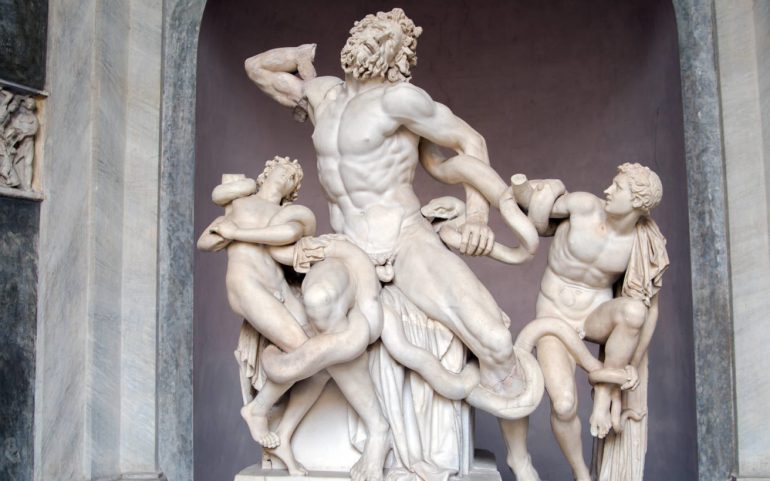Even if you take a sneak peek at the penises of the naked statues of Greek antiquity, even for so long, you can not help but notice that their owners are not exactly gifted.
Carved with familiar dexterity, like all marble representations of classical Greek art, penises and their strangely small size have occupied the history of art much more than one might assume.
Greek sculptors also paid the same attention to the carving of the phallus as in the rest of the performance, so one could not talk about mistakes, flaws or negligence.

No, everything else. The reasons why our ancestors made their statues with small penises were ideological. Because that is exactly what they wanted! They preferred them as a society.
Where today the biggest is considered the best, the Greeks had a different point of view here κι
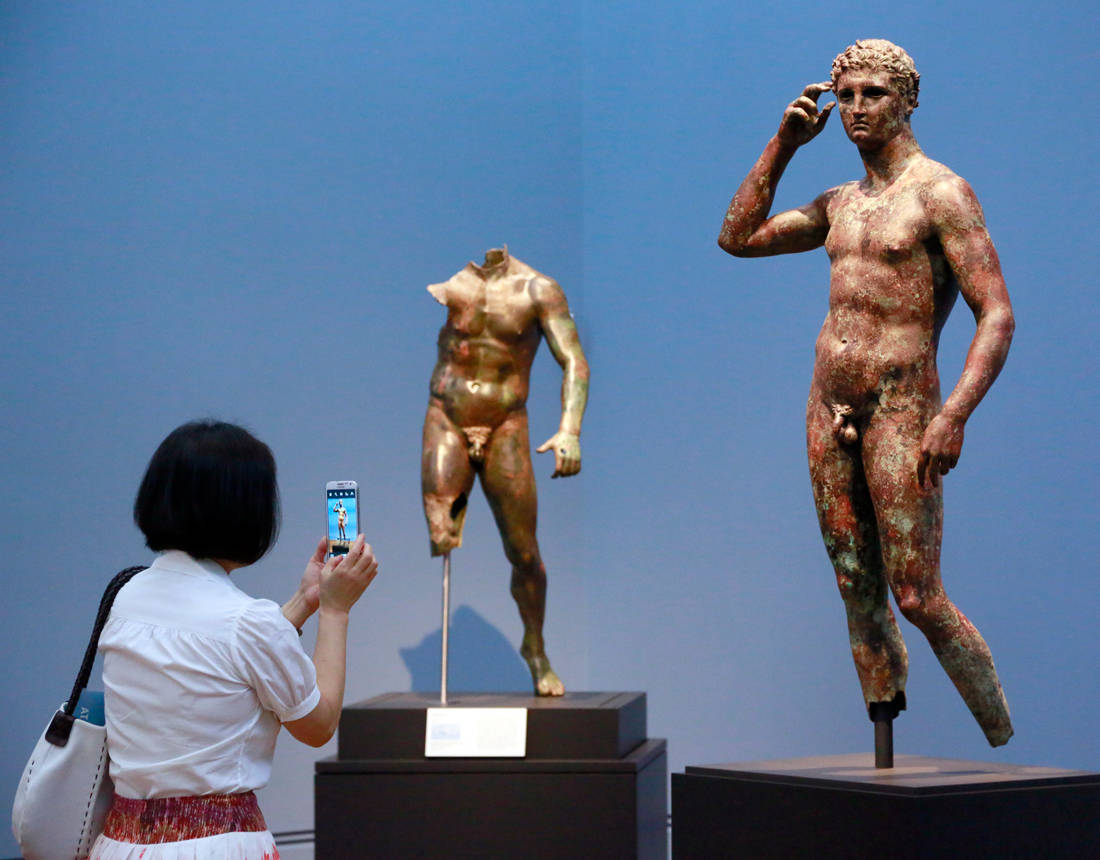
Greek antiquity presented its male statues even smaller than the average penis, forcing even the Roman copyists to adopt the aesthetic tendency. Only for the Greeks the reasons were not aesthetic.
The Greeks preferred you see their gods and heroes not at all gifted. Something that both the history of art and the theory of aesthetics know well. From simple observation alone.
As the 2013 study of the University of Athens "Penile representations in ancient Greek art" (Rempelakos, Tsiamis and Poulakou-Rebelakou) tells us, the methodology followed was to examine a large number of penis representations from ancient Greek ceramics and sculpture. and the analysis of ancient plays (satirical dramas and comedies ".
In other words, take a look at an archeological site Museum and you immediately understand that something is running with the molecules of the statues. Even if they are on muscular bodies that emit pump!
But why did our ancestors present the penis like that?
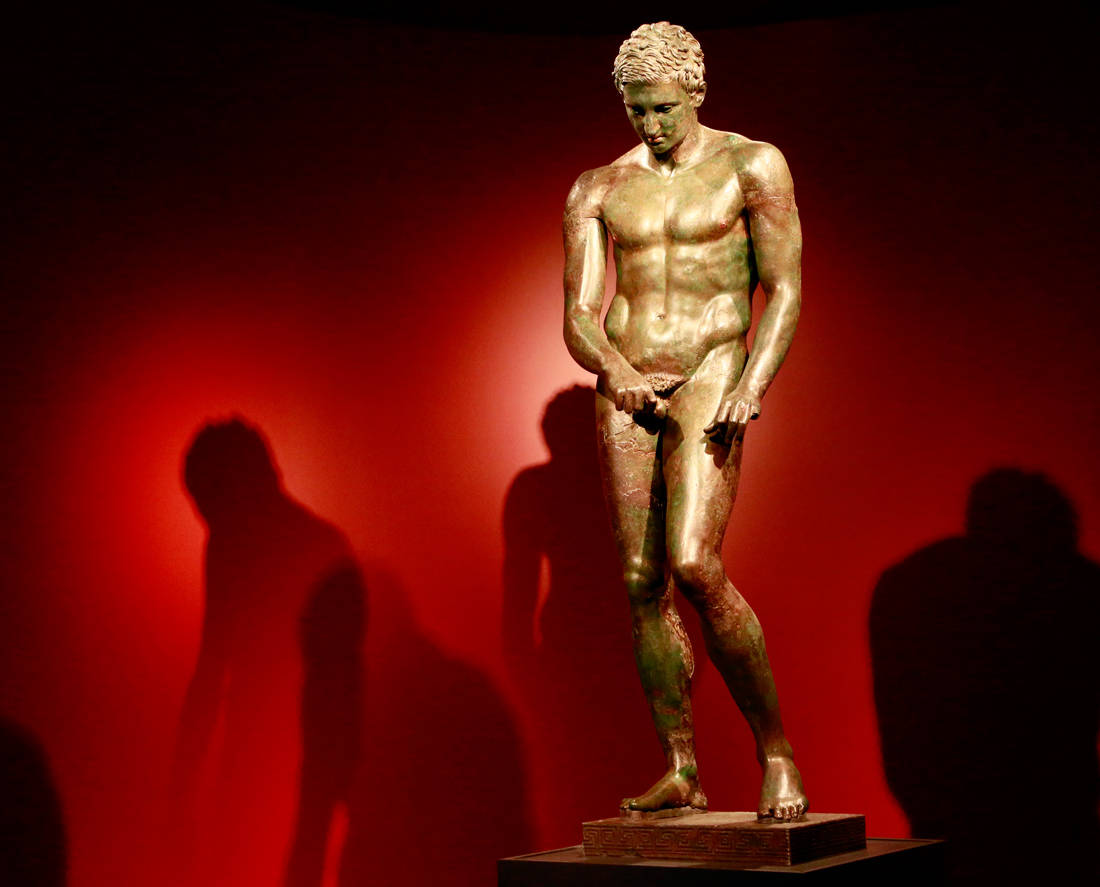
The answer seems to have to do with the cultural preferences and ideological origins of the ancients. The ideal man for the ancient Greek was not the flirtatious lover, but the wise public official. The man who left eroticism aside to deal with other, big, things like policy, democracy, philosophy, science and art in short.
"Greeks associated small, non-erect penises with moderation, one of the core values that shaped their view of ideal masculinity," explains Andrew Lear, a Harvard professor of classical antiquity.
"There is this contrast between the small and erect penises of ideal men (heroes, gods, naked athletes) and the oversized, erect penises of satyrs (mythical beings half human-half goats who were drunk and extremely lustful) and many more idealized men. Older men, for example, often have bigger penises, "Olivia Goldhill tells us in her article" Why Do Greek Statues Have Such Small Penises? " (2016).
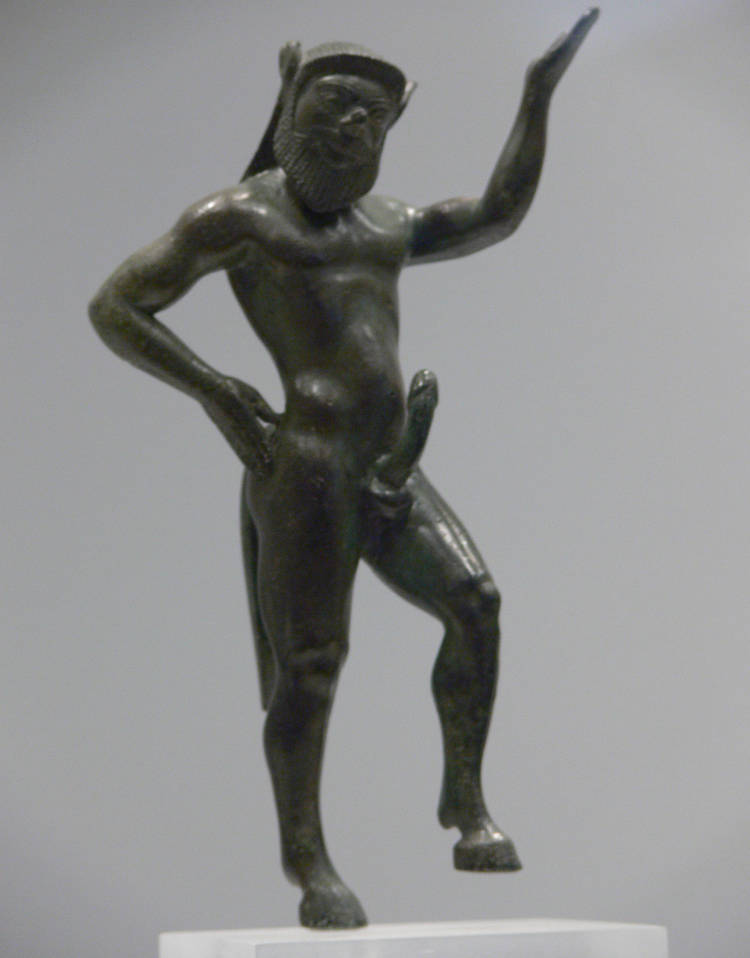
And indeed there are many ancient Greek statues depicting larger penises, only they have nothing to do with bravery, cleos and worship. We will never see Zeus with a big penis. Or Hercules. But we will see a slave. The only god who deviates from the standard and is represented as a particularly gifted person is Priapus, the god of fertility and protector of the buttocks, gardens and male genitals.
He is also the son of Dionysus (god of wine and feasting, whose servants were the satyrs) and Aphrodite (goddess of love), a creature cursed by Hera who was raised by the satyrs. Ugly, sexually incompetent and naughty, having tried so many times to unsuccessfully rape goddesses, nymphs and young girls, it was fitting to have a big penis. He was a grotesque figure who had little to do with the noble Twelve.

The Greeks therefore kept the small penis for what they adored and admired, depicting all the negative social models with large molecules. Like the barbarians! The big penis not only showed that someone was stupid and light-skinned, but also uncivilized, a proper peasant. The refined society of the Greeks considered itself surrounded by half-mad men who were dominated only by their hellish impulses.
"Many barbarians living around Greece had raided and fought with the Greeks, displaying the worship of their penis and such practices were considered a sign of barbarism and cultural emptiness in the eyes of the Greeks," Goldhill explains.
The large penises were nothing but signs of a man ruled by his unacknowledged desires (and not his logic), an uncivilized being whose behavior was more like an animal than a rational man who had mastered his passions. No one Greek he would not want it to end up like Priapus' blister and, even worse, to be stuck with some barbarian resin.
As art theorist Ellen Odredsson observes here ("Why Do All Old Statues Have Such Small Penises?" Of 2016): "The ideal Greek was rational, intelligent and reliable. Not that he did not continue to have much sex, but that was irrelevant to the size of his penis. "His small penis even allowed him to maintain his sober logic."
Does not Aristophanes tell us in his "Clouds" (verses 1010-1019) that the characteristics of the ideal man are "strong chest and shining shield; large shoulders and short tongue; small and thick buttocks"? While the big penis is associated with all the evils: "But if you roll where in all times the present, yellow breasts and shoulders you will have small, you will have a big tongue and a narrow chest, a stallion butt and a long front"!
These were the characteristics that people brought that you would not want lots with…
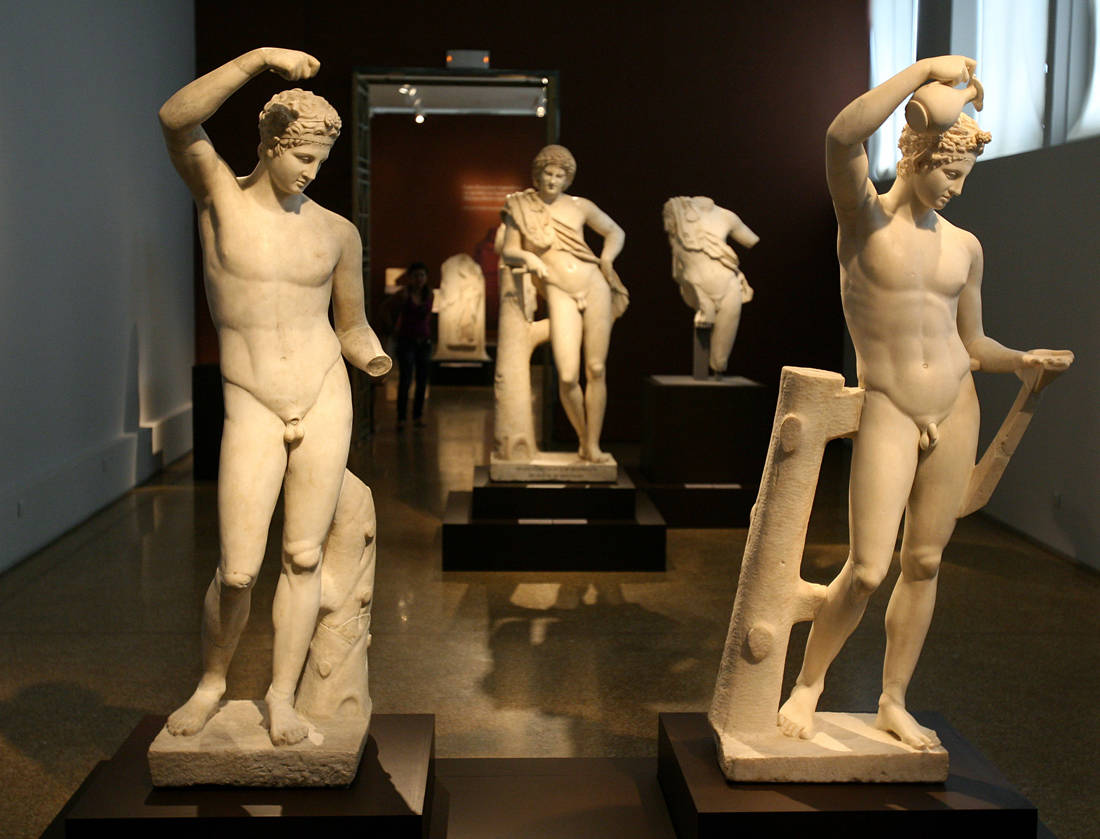
The teenage young man represented in the reasoning of our ancestors the best kind of man. There, in his early adolescence, the boy was beautiful, innocent and full of potential, a bud waiting to bloom. As for the male genitals, they grow exactly during the period of pre-adolescence and adolescence.
This is another reason why our ancestors may have depicted small molecules. "The smaller the penis, the closer you are to the ideal, the more attractive you are," says Andrew Lear, a position that draws considerable consensus in the world of art history.
Still others historians do not accept that the penises of the ancient Greek statues are so small. And they point to a special element here, that "they are loose": "If you compare their size with most loose male penises, then they are not actually significantly smaller than what real penises tend to be," Oredsson notes.
Rebelakos, Tsiamis and Poulakou-Rebelakou claim in their article "It is noteworthy that many of these images belong to athletes during or immediately after strenuous exercise, when the penis shrinks." Even for the famous David of Michael Angelos there is such a theory, from a 2015 study of two Florentine university doctors (Pietro Antonio Bernabei and Massimo Gulisano), that his penis is not small, it is just the conditions.
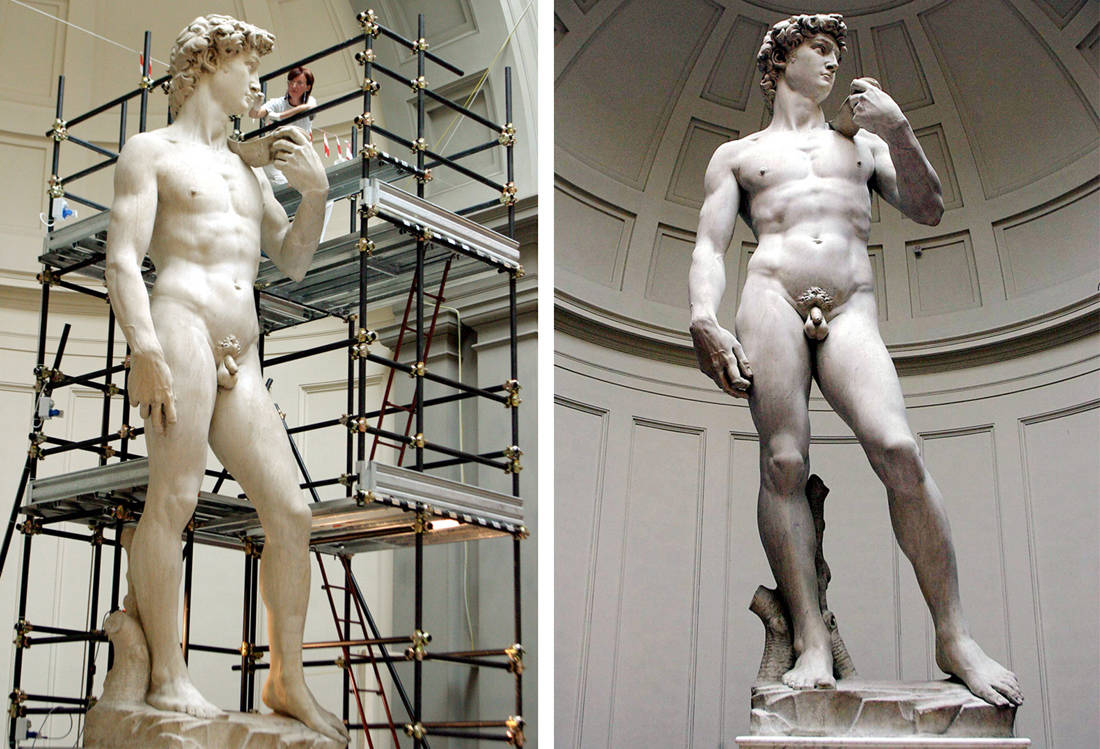
David is ready to face the beastly Goliath, he tells us Michelangelo, and so it is the deadly fear he feels towards the existential threat that has shrunk his molecule. The doctors' anatomical study showed that "every anatomical detail, even the formation of muscles in his forehead, is consistent with the combined effects of fear, tension and aggression."
And of course we can not ignore the aesthetic harmony that classical art so sought, the correct proportionality of sizes. As with the hands, feet and face, Greek sculpture drastically moved away from, say, the earlier artistic contexts of the Egyptians and Sumerians.
The Greek sculptor tried to render the human body exactly as it is. Or almost! "Greek men watched each other naked all the time in gyms," Lear points out here, "so they must have known that, to a degree, not every admirably modest man had a small penis, just as not every immoderate, cowardly man had. and a big drunk man ".
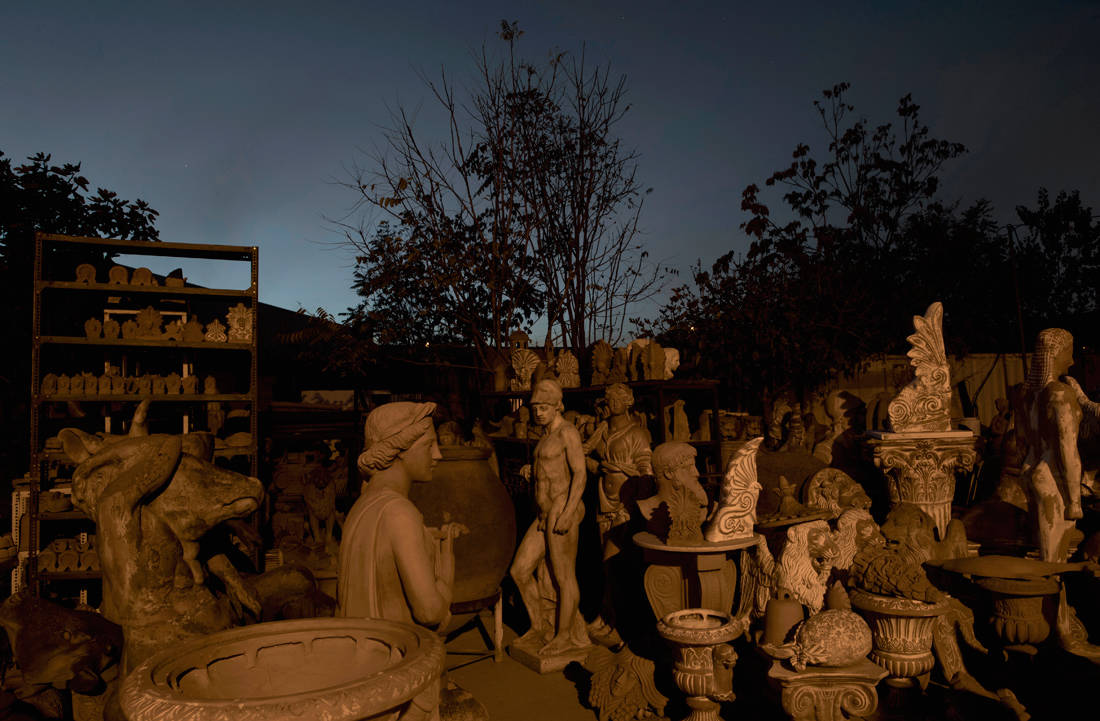
As with many more aesthetic innovations of our ancestors, the Greek choice of small but proportional penises became the norm for sculpture in the centuries to come. And while the Romans maintained a more positive attitude towards the large penises, they were so lustful and lustful as their societies were, when it came to making great art they stole from the Greeks.
Roman sculpture remained the model of the small Greek penis, an aesthetic decision that was maintained even by its religious art Middle Ages, which also drew inspiration from the Greeks and Romans. In fact, when the Renaissance period came, the small penises were deified once again, even if the great Renaissance teachers no longer knew why they adopted this stylistic rule.
The Greeks therefore preferred small penises as symbols of moderation, logic and a balanced life, as Kenneth Dover suggests in his book "Greek Homosexuality". In contrast to the large molecule that was a sign of stupidity, immodesty, lust and ugliness.
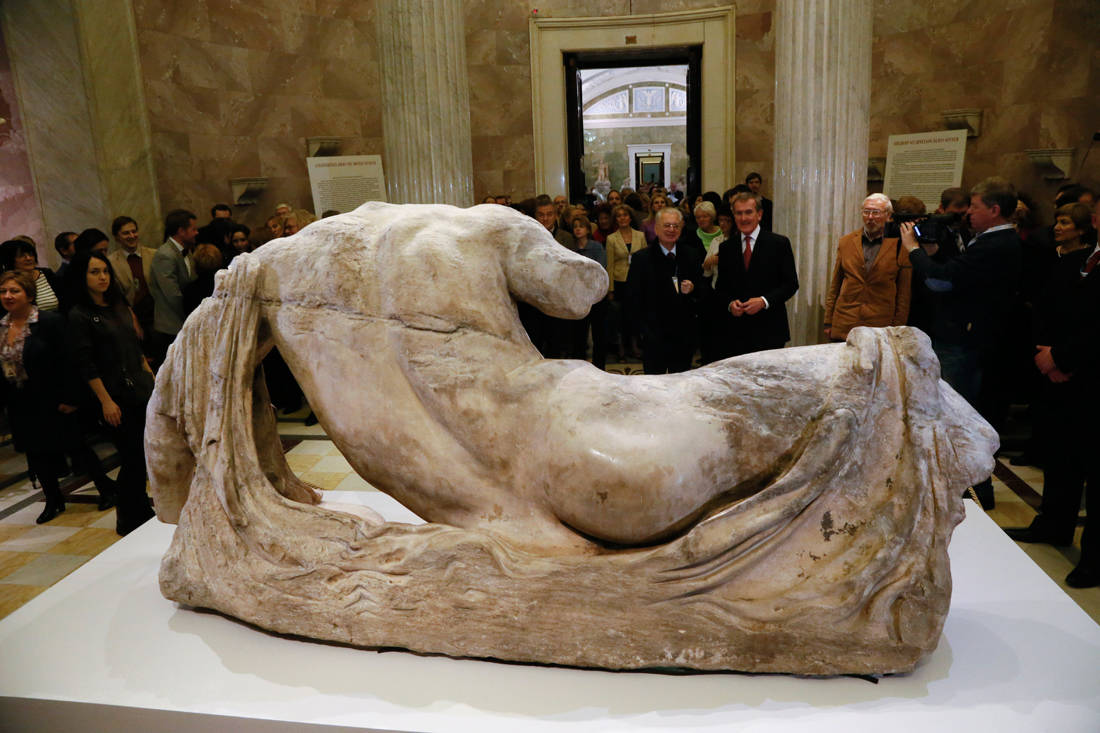
"The small penis was in accordance with the Greek ideals of male beauty. It was a sign of the superior culture and a derivative of civilization ", notes the historian Paul Chrystal in his book" In bed with the ancient Greeks "(2016). The small penis meant cultural superiority.
The statues of the Greeks set the timeless ideal of beauty: robust men, fit and not at all gifted. Because you see the Greeks left the molecule small to show the greatness of another element of the male personality that they were infinitely more interested in. Spirit they said…
